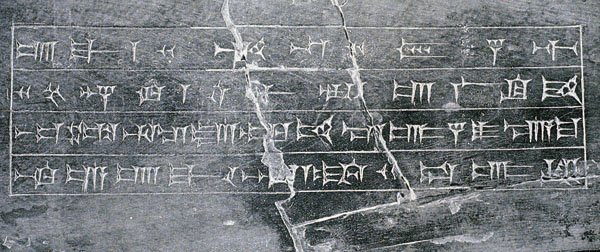Image Details

After Wiseman, 1966
Wax tablets may have been portable, but they were expensive and easy to alter—by smoothing out the wax with the flattened end of a stylus and inscribing new text. To prevent theft, owners probably marked their “books” with a personal identification. The cover of a large ivory polyptych from Nimrud (shown here, compare with drawing) identifies this writing board as belonging to the “Palace of Sargon, king of the world.” The four-line inscription states that the Assyrian king Sargon II (721–705 B.C.) ordered the writing of a series of astrological omens “on an ivory writing tablet and deposited it in his palace at Dur-Sharrukin” (present-day Khorsabad, in Iraq).
